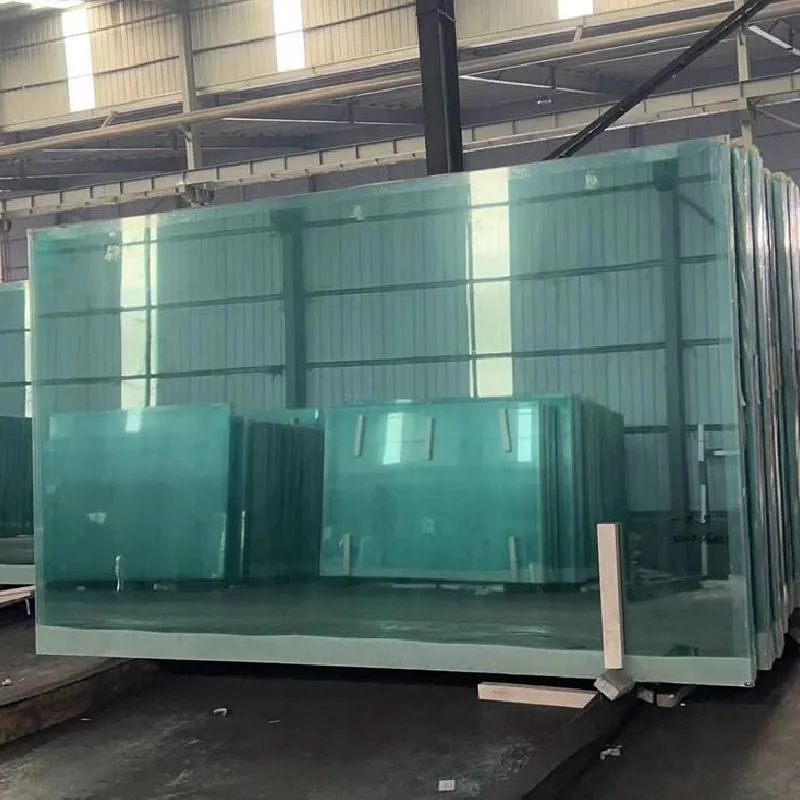Understanding Annealed and Tempered Glass Features and Applications
Glass has become an integral component in architecture, automotive design, and various industrial applications due to its versatility and aesthetic appeal. Among the various types of glass, annealed and tempered glass are two prominent categories, each with distinct characteristics and purposes. Understanding their differences is crucial for selecting the appropriate type for a specific application.
Annealed Glass
Annealed glass is the most basic form of glass used in construction and various applications. It is produced by slowly cooling the glass during the manufacturing process, which helps relieve internal stresses. This gradual cooling results in a uniform structure, providing good optical clarity. However, annealed glass is more fragile than other types. If it breaks, it shatters into large, sharp shards that can pose significant safety risks. Due to its cost-effectiveness and ease of fabrication, annealed glass is commonly used in residential windows, mirrors, and other decorative applications where safety risks are minimal.
Tempered Glass
annealed tempered glass
In contrast, tempered glass undergoes a rigorous heat treatment process that significantly enhances its strength and safety. The glass is heated to a temperature of about 620 degrees Celsius (1,148 degrees Fahrenheit) and then rapidly cooled. This toughening process creates compression on the surface of the glass and tension within, making it up to five times stronger than its annealed counterpart. When tempered glass does break, it shatters into small, blunt pieces instead of sharp shards, minimizing the risk of injury. This characteristic makes tempered glass an ideal choice for shower doors, glass doors, and facades.
Application Differences
The choice between annealed and tempered glass largely depends on the application and safety requirements. For example, in environments where human safety is paramount, such as shower enclosures or glass railings, tempered glass is preferred due to its strength and safety features. In contrast, annealed glass might be adequate for applications where aesthetic appeal is more critical than strength, such as picture frames or decorative elements.
Conclusion
In summary, both annealed and tempered glass serve important roles in construction and design, with each type offering unique benefits and limitations. While annealed glass is suitable for less demanding applications, tempered glass is essential in areas where safety and strength are top priorities. Understanding these differences allows architects, builders, and designers to make informed decisions that meet both aesthetic and functional needs in their projects. As innovation in glass manufacturing continues, the development of new products will likely further enhance the versatility and application of glass in our daily lives.
 Afrikaans
Afrikaans  Albanian
Albanian  Amharic
Amharic  Arabic
Arabic  Armenian
Armenian  Azerbaijani
Azerbaijani  Basque
Basque  Belarusian
Belarusian  Bengali
Bengali  Bosnian
Bosnian  Bulgarian
Bulgarian  Catalan
Catalan  Cebuano
Cebuano  Corsican
Corsican  Croatian
Croatian  Czech
Czech  Danish
Danish  Dutch
Dutch  English
English  Esperanto
Esperanto  Estonian
Estonian  Finnish
Finnish  French
French  Frisian
Frisian  Galician
Galician  Georgian
Georgian  German
German  Greek
Greek  Gujarati
Gujarati  Haitian Creole
Haitian Creole  hausa
hausa  hawaiian
hawaiian  Hebrew
Hebrew  Hindi
Hindi  Miao
Miao  Hungarian
Hungarian  Icelandic
Icelandic  igbo
igbo  Indonesian
Indonesian  irish
irish  Italian
Italian  Japanese
Japanese  Javanese
Javanese  Kannada
Kannada  kazakh
kazakh  Khmer
Khmer  Rwandese
Rwandese  Korean
Korean  Kurdish
Kurdish  Kyrgyz
Kyrgyz  Lao
Lao  Latin
Latin  Latvian
Latvian  Lithuanian
Lithuanian  Luxembourgish
Luxembourgish  Macedonian
Macedonian  Malgashi
Malgashi  Malay
Malay  Malayalam
Malayalam  Maltese
Maltese  Maori
Maori  Marathi
Marathi  Mongolian
Mongolian  Myanmar
Myanmar  Nepali
Nepali  Norwegian
Norwegian  Norwegian
Norwegian  Occitan
Occitan  Pashto
Pashto  Persian
Persian  Polish
Polish  Portuguese
Portuguese  Punjabi
Punjabi  Romanian
Romanian  Russian
Russian  Samoan
Samoan  Scottish Gaelic
Scottish Gaelic  Serbian
Serbian  Sesotho
Sesotho  Shona
Shona  Sindhi
Sindhi  Sinhala
Sinhala  Slovak
Slovak  Slovenian
Slovenian  Somali
Somali  Spanish
Spanish  Sundanese
Sundanese  Swahili
Swahili  Swedish
Swedish  Tagalog
Tagalog  Tajik
Tajik  Tamil
Tamil  Tatar
Tatar  Telugu
Telugu  Thai
Thai  Turkish
Turkish  Turkmen
Turkmen  Ukrainian
Ukrainian  Urdu
Urdu  Uighur
Uighur  Uzbek
Uzbek  Vietnamese
Vietnamese  Welsh
Welsh  Bantu
Bantu  Yiddish
Yiddish  Yoruba
Yoruba  Zulu
Zulu 

